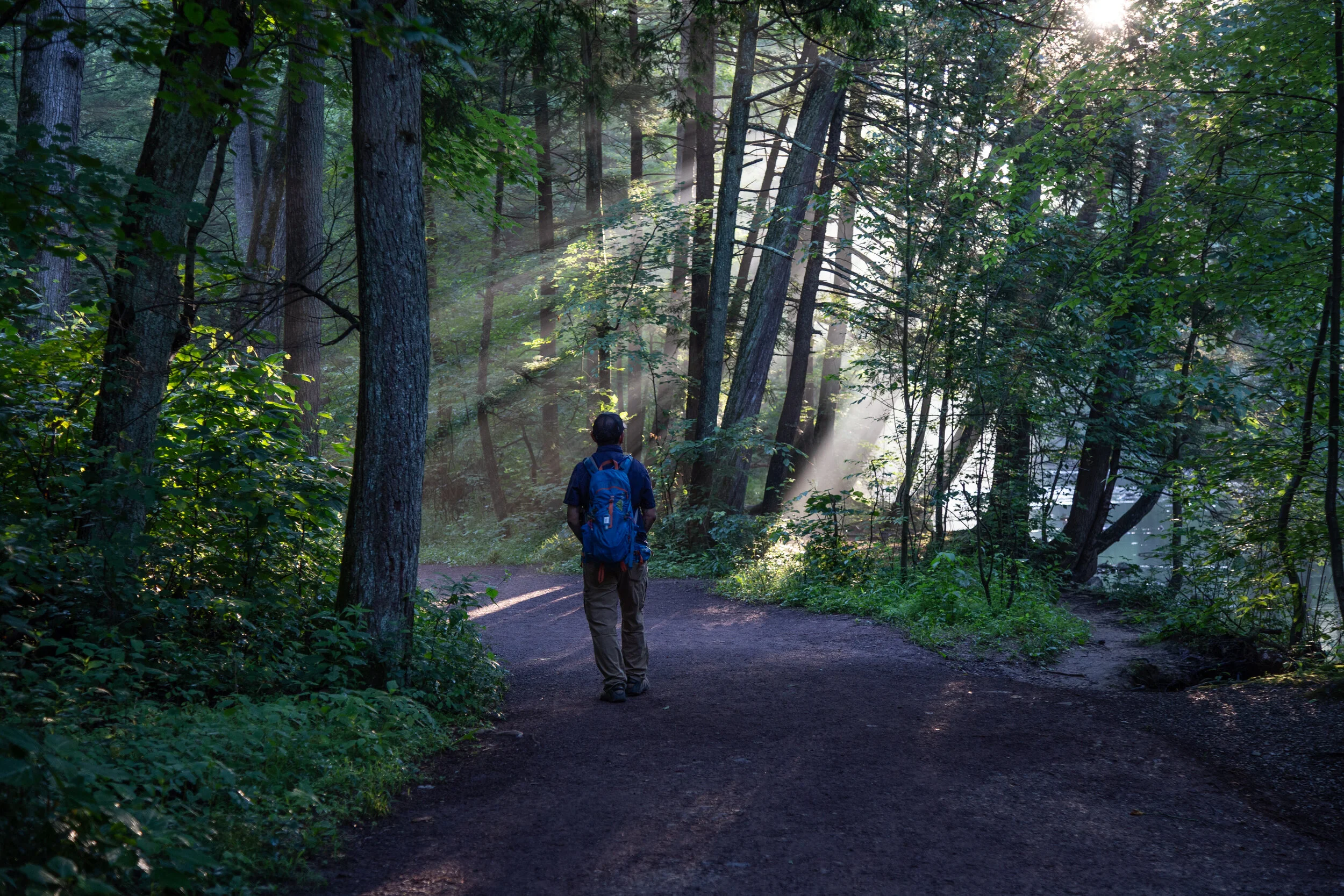It had been a long couple of months locked away in a city apartment with the Covid pandemic looming over the world. On top of everything I was preparing for a move to eastern Pennsylvania. I was able to get in a few short, local hikes in Griffith Park before I left California, but no wilderness or desert hiking for months. Being away from the backcountry took a toll on my mental and physical well being. It broke my heart to cancel all my plans in Joshua Tree, Idyllwild and the Eastern Sierra, and I was not able to bid what I loved most about California, which were its high-elevation trails, wilderness and desert backcountry a proper farewell. But now I have arrived on the east coast and as the world is beginning to return to what people are referring to as “the new normal”, I am finally starting to feel more like myself again.
Tonight my husband and I began our journey to exploring nature on the east coast. Even though I grew up here, seeing Pennsylvania as an adult is seeing it with a new perspective. We started off with a short walk on a nature trail not far from our home called the Monocacy Way Trail. I used to walk this trail when I lived here over 20 years ago. It has now become part of Historic Bethlehem’s 10.9 mile long Heritage Trail which was designed to give Bethlehem city explorers a taste of Bethlehem history from its Moravian roots to its industrial heyday of the Bethlehem Steel.
We started at the trailhead at Illick’s Mill* across from Monocacy Park. The trail begins as a paved walkway but quickly turns into a proper dirt track. The first thing I noticed is how much greener everything is compared to Southern California. It’s quite a different color pallet. As I walked the trail became a symphony of birdsong; Gray Catbirds, Wood thrush, Carolina Wren and American Robins. There are many use trails along the path if you want to veer off the main trail and walk along Monocacy Creek. Wildflowers are plentiful here with Forget-me-nots, Honeysuckle, Day Lily, Milkweed and Aster. The trail winds along the creek and eventually crosses over the train tracks. I then passed by an open grassy meadow full of thistle and grazing bunnies. At about .8 miles I arrived at Schoenersville Road. If you cross Schoenersville Road, you will continue on past the Burnside Plantation. It was already dark by this time, so we headed back. As we did the fireflies started to light up the trail, just as I remembered from when I was a kid. This is a nice little nature walk bursting with wildlife such as deer, rabbits, box turtles, birds, etc. Great for a quick dose of nature any time of day.
*A little history about Illick’s Mill: The grist mill was built on the Monocacy Creek by John Peter and his son Joseph in 1856. At that time it operated as a flour and feed company. The Mill changed hands many times over the years opening and closing its doors. In 1935, the Bethlehem Water Authority took over the Mill and the Civilian Conservation Corps and the Works Progress Administration constructed Monocacy Park. Then in 1965 the Mill was restored and reopened as a music venue appealing to Lehigh Valley teenagers. It closed its doors again in 1973. Over the years, the Mill continued to change ownership. But what I remember most about Illick’s Mill were the years it hosted a haunted house attraction run by the Bethlehem Jaycees in the 80s and 90s. In the year 2005, the Mill was added to the National Register of Historic Places. As of today the Mill is home to the Appalachian Mountain Club’s Mid-Atlantic Conservation Office and is available for meetings and events through the City of Bethlehem.
Read More





